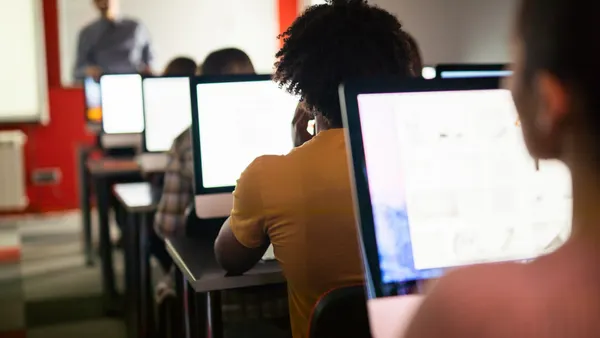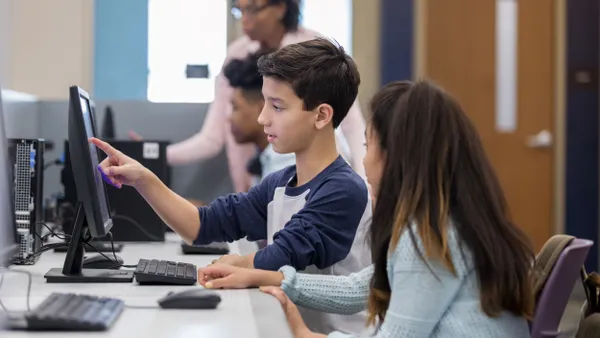Dive Brief:
- The ResponsiveEd public charter school system in Texas and Arkansas is among those turning to video conferencing as a way to improve professional development opportunities and collaboration while saving time and money.
- Ed Tech Magazine reports all of ResponsiveEd’s more than 70 schools have cameras and video conferencing tools, which creates the opportunity to provide ongoing training to all teachers and staff members, rather than coordinating once-per-year, in-person training for a select few.
- Next up for the ResponsiveEd system is even greater collaboration among teachers across schools when it comes to sharing best practices, as well as an introduction of video conferencing in classrooms so students can talk to experts and thought leaders all over the world.
Dive Insight:
Statewide programs all over the country can benefit from video conferencing technology. When a system’s reach is so broad, it is hard to bring people together for high-quality training. That inevitably leads to fewer professional development opportunities at the system level – travel is too expensive and it is hard to get people to take the time. Video conferencing, while convenient, may take time to implement as teachers and other staff members adapt to the new platform and troubleshoot any tech problems. But the power of getting such tools into schools is great, including when it reaches the classroom.
Teachers in the District 5 Schools of Spartanburg County in South Carolina have incorporated more video conversations into their lesson plans since implementing a 1:1 device initiative with laptops. Just giving kids the computers and internet access has made teachers think more creatively about external connections that can bring lessons alive.












